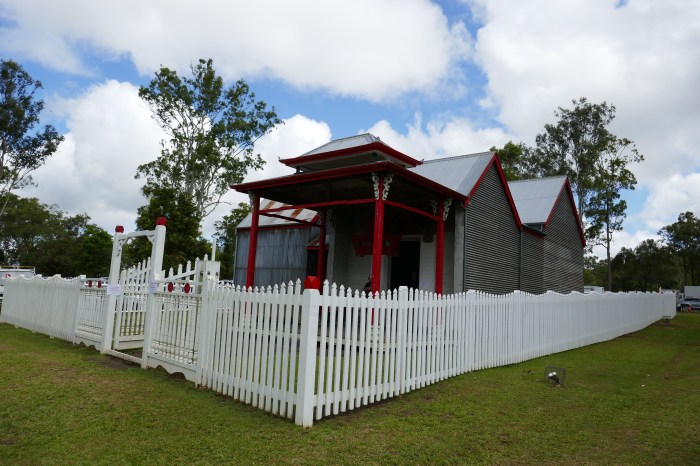 Hou Wang Temple is a rare example of an overseas Chinese temple dating back to about the 1900s. It is located at Atherton’s Chinatown on the Atherton Tablelands. It was used as part of the early Chinese settlers’ social and religious gatherings. Most of the ornate carvings, bell and metal pieces were made in China. The building was made of local timbers and corrugated iron. The pagoda at the front of the building was blown away during the 1956 cyclone but was later restored.
Hou Wang Temple is a rare example of an overseas Chinese temple dating back to about the 1900s. It is located at Atherton’s Chinatown on the Atherton Tablelands. It was used as part of the early Chinese settlers’ social and religious gatherings. Most of the ornate carvings, bell and metal pieces were made in China. The building was made of local timbers and corrugated iron. The pagoda at the front of the building was blown away during the 1956 cyclone but was later restored.
At the temple entrance, you have to straddle a 15cm (1/2 a ruler length) wall. It is unique. Instead of stepping into the building you step over a timber board, which was used to stop the bad spirits entering. Also at the entrance are two doors. The second door is kept closed so bad spirits can not go straight through to the altar — as an extra precaution. You walk in and then walk around to the altar area, where the ornate carvings tell a story.

Inside, behind the double doors is the altar and urn.

The guides are very knowledgeable, giving you an informative history about the Chinese temple and the remaining settlement. They talk about how someone chanced upon the bell deep in the mud some 200m in front of the temple.




Beside the temple are old weathered timber buildings used as a social and meeting place, including living quarters with kitchen.

Living quarters with earthen floor to the side of temple.
It was handed over to the National Trust of Australia (Queensland) in 1979 by the Fong family.
















Who would have know this treasure existed up north? What a great find and an important part of history. #teamIBOT
LikeLiked by 1 person
Thank you Renee. It certainly is.
LikeLike